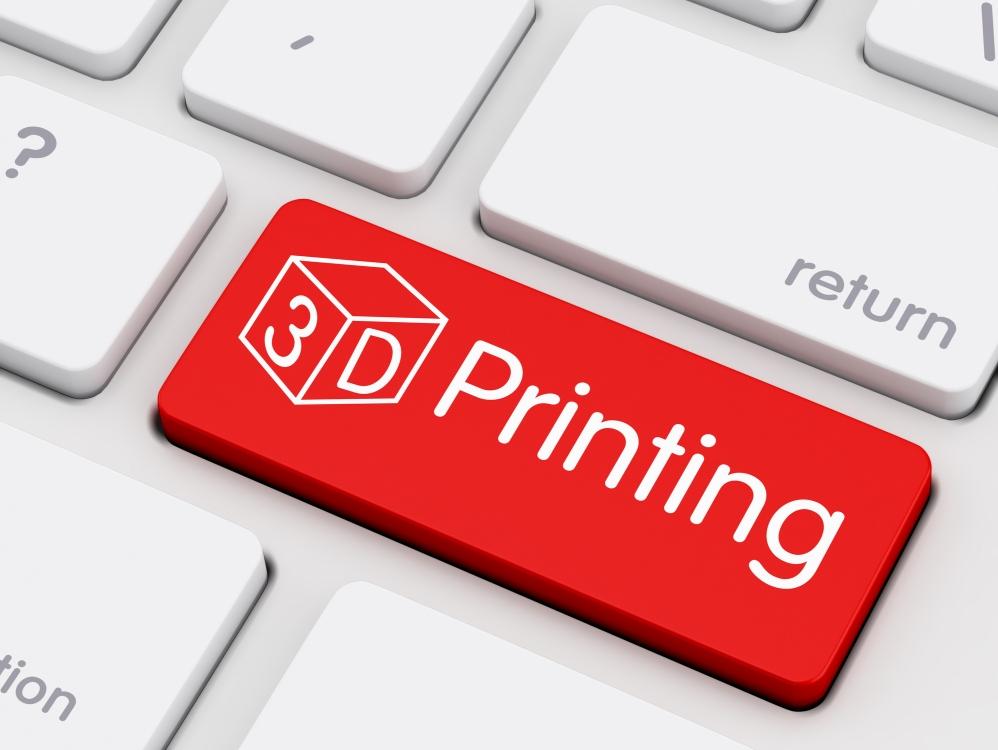- FMA
- The Fabricator
- FABTECH
- Canadian Metalworking
Our Publications
Categories
- Additive Manufacturing
- Aluminum Welding
- Arc Welding
- Assembly and Joining
- Automation and Robotics
- Bending and Forming
- Consumables
- Cutting and Weld Prep
- Electric Vehicles
- En Español
- Finishing
- Hydroforming
- Laser Cutting
- Laser Welding
- Machining
- Manufacturing Software
- Materials Handling
- Metals/Materials
- Oxyfuel Cutting
- Plasma Cutting
- Power Tools
- Punching and Other Holemaking
- Roll Forming
- Safety
- Sawing
- Shearing
- Shop Management
- Testing and Measuring
- Tube and Pipe Fabrication
- Tube and Pipe Production
- Waterjet Cutting
Industry Directory
Webcasts
Podcasts
FAB 40
Advertise
Subscribe
Account Login
Search
3D printing news: from rockets to chicken nuggets
If you don’t think there’s much happening in the industry, just Google ‘3D printing’
- By Kip Hanson
- August 26, 2020
While scrambling for some fresh content to keep the editor happy and me gainfully employed, I did the obvious: Googled “3D printing” and clicked the News icon at the top of the search page.
There’s a lot going on out there:
• UK-based aerospace manufacturer BAE Systems recently installed its fourth Stratasys F900, a whopper of an FDM printer with a build volume of 2,772 x 1,683 x 2,027 mm (that’s 109 x 66 x 78 in. to you Imperial people; as I wrote in a blog a couple months ago, I’ve gone metric). It’s part of the company’s “Factory of the Future” initiative. Not exactly an original name, but congrats, BAE.
• Orbex, another British aerospace firm, bragged that its 3D-printed rockets will be the first to launch from the United Kingdom’s new Sutherland Space Hub in Scotland. I’m glad to hear that the UK is getting into the space business, and as a long-time Star Trek fan, this helps explain the origins of Scotty, the Enterprise’s chief engineer.
• Europe’s largest 3D printer—a 10-meter square gantry-style machine from Belgium’s COBOD—just “spat out” an entire two-story house, a proof of concept aimed to pave the way for more affordable housing.• Automaker Porsche has developed a 3D-printed piston for its 911 GT2 RS sportscar. It weighs 10% less than its forged equivalent, has a closed cooling duct within the piston’s crown, and adds an impressive 30 HP to the 730-HP engine. No big deal, perhaps, but the internal ducting represents just one more example of a part feature impossible to create without 3D printing.
• Researchers in China have reportedly used SLA technology to print “propellants” from a mix of photopolymer resin and RDX, a military explosive. They then placed these small, disc-shaped charges in a casing, tamped in a miniature cannonball, and let ‘er rip. The results were decidedly lethal to anyone on the receiving end. They’re not alone. A laboratory in the UK has begun experimenting with 3D-printed explosives (think shaped charges), while Australian scientists are 3D-printing fuel rods for rocket motors. Hang on tight.
There’s plenty more. Scientists at the University of Minnesota (Go, Gophers!) have printed a beating heart muscle, which they intend to use for disease and pharmaceutical research. California bicycle brand Superstrata has launched an Indiegogo campaign for custom, unibody, 3D-printed carbon fiber e-bikes (starting price is $2,499).
And the most exciting 3D printing news of all? The Russian firm Bioprinting Solutions has partnered with the Colonel to produce 3D-printed chicken nuggets. I can hardly wait to taste them!
About the Author

Kip Hanson
About the Publication
- Podcasting
- Podcast:
- The Fabricator Podcast
- Published:
- 04/16/2024
- Running Time:
- 63:29
In this episode of The Fabricator Podcast, Caleb Chamberlain, co-founder and CEO of OSH Cut, discusses his company’s...
- Trending Articles
- Industry Events
16th Annual Safety Conference
- April 30 - May 1, 2024
- Elgin,
Pipe and Tube Conference
- May 21 - 22, 2024
- Omaha, NE
World-Class Roll Forming Workshop
- June 5 - 6, 2024
- Louisville, KY
Advanced Laser Application Workshop
- June 25 - 27, 2024
- Novi, MI



























